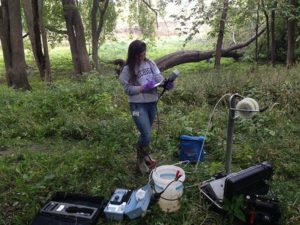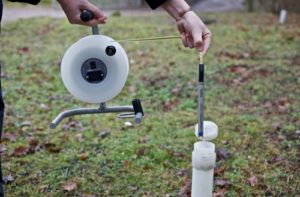Groundwater Sampling and Analysis Plan (SAP) and Sampling Preparation

The SAP should be written by an experienced practitioner who has relevant field experience and who can identify potential sources of error and bias in each component of the ground-water sample collection process. Implementation of a comprehensive and well thought out SAP should ensure that ground-water sample collection procedures are consistent from one sampling event to the next, thus reducing the potential for sampling team related error and bias.
The SAP details specific standard operating procedures for a number of work tasks to be implemented during the sampling event. While preparing the SAP, a great deal of thought needs to go into the selection of protocols for each of the work tasks most appropriate for any individual site. This includes methods and equipment for wellhead screening, water-level and product-thickness measurement, field quality assurance (QA) and quality control (QC), sampling point purging and sample collection, field parameter measurement, and field equipment decontamination.
Well Headspace Screening
The first task implemented by the sampling team at each sampling point is opening the well and screening the headspace above the water column in the well for the presence of volatile or combustible gases and vapors. FID(flame ionization detector), PID (photoionization detector) or other flammable vapors may be used for well headspace screening and their applications.

Wellhead screen with PID
Water-Level and Product-Thickness Measurement
Following well headspace screening, the next task is to take water-level or product thickness measurements. These measurements must be taken in all sampling points prior to any purging and sampling activities, to ensure that the data are collected under as close to the same environmental and atmospheric conditions as possible. This is of particular concern when taking water-level measurements, which are potentially affected by a number of environmental variables including changes in ambient air pressure (especially problematic for shallow, unconfined formations), tides, changes in levels of nearby rivers, precipitation events, and operation of nearby pumping wells.

Water level measurement
Field Quality Assurance and Quality Control
Below table summarizes the key administrative and field elements of a field QA program for ground-water sampling.
Administrative Elements
- Project description and definition of project objectives
- Project fiscal information (travel, support services, expendable supplies, equipment needs)
- Schedule of tasks and products (field activities, analysis, data review, reporting)
- Project organization and responsibility
- Selection of appropriately trained and experienced personnel for field and management roles
Field Elements
- Implementation of technically sound SOPs
- Documentation of protocols for operation, calibration, and maintenance of all field instrumentation
- Collection of field QC samples (which, when, how, and how many)
- Adherence to required sample pretreatment methods and holding times
- Use of chain-of-custody procedures
- Record keeping procedures that incorporate good laboratory practices (GLPs)
- Methods for checking accuracy of field parameter measurements
- Description of corrective actions to be implemented if an error is detected at any point in the field
Table below presents a list of the various QC samples that may be included in a field QC program, with the typical frequency of collection for each type of sample.
Type of QC Sample Recommended Frequency of Collection
| Trip blank | One per shipment per day per laboratory |
| Temperature blank | One per shipping container |
| Field blank | One per waste management unit |
| Equipment blank | One for every ten sampling points |
| Blind duplicate sample | One for every ten sampling points |
| Spiked sample | One for every ten samples submitted for analysis |
| Field split sample | Variable, but at least one upgradient location and two downgradient locations should be sampled |
Purging and Sampling Device Selection and Operation
Many devices are available for purging and sampling ground water. The SAP must include a description of the devices selected for use on a task-specific basis.ASTM Standard D6634 summarized selection criteria in more detail:
- Accuracy and precision of samples provided by device;
- Material of construction of the device;
- Outside diameter of the device;
- Lift capability of the device;
- Flow rate control and range;
- Ease of operation and in field servicing;
- Portable versus dedicated application;
- Ease of field decontamination;
- Reliability and durability;
- Operating cost.
A wide variety of purging and sampling equipment is available for use in ground-water sampling programs: Available devices can be classified into six general categories:
- 1.Grab sampling mechanisms (including bailers, syringe samplers, and thief samplers);
- 2.Suction-lift mechanisms (including surface centrifugal pumps and peristaltic pumps);
- 3.Electric submersible centrifugal pumps;
- 4.Positive displacement mechanisms (including gas-displacement pumps, bladder pumps, piston pumps, progressing cavity pumps, and electric submersible gear-drive pumps);
- 5.Inertial lift pumps;
- 6.Passive sampling devices (including passive diffusion bag samplers, Snap Samper, Hydrasleeve , etc)
Source:
Coordinator: EnvGuide Team






